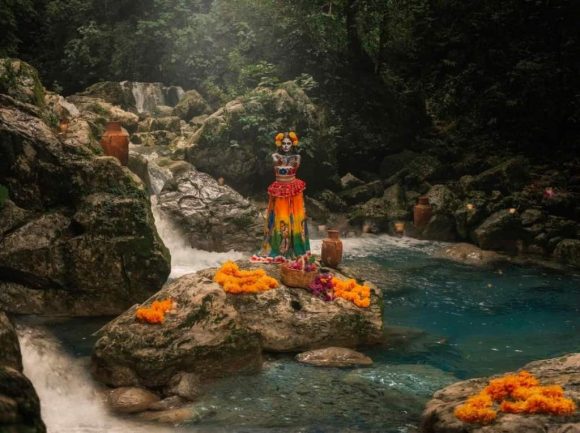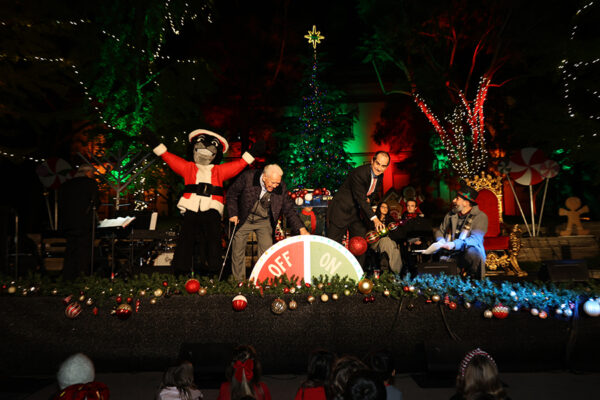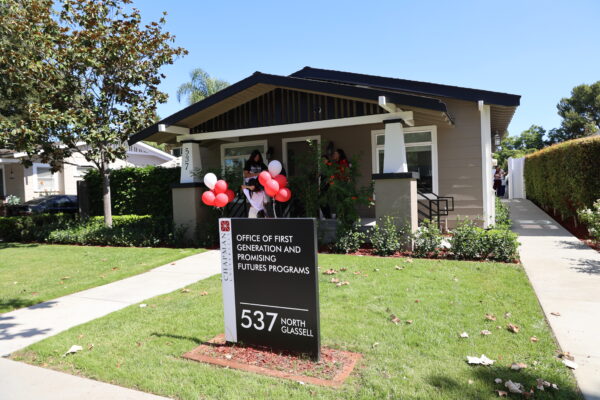Dia de los Muertos, or Day of the Dead, is Oct. 31-Nov. 2. Gabriela Castaneda, Ph.D., director of Latinx achievement at Chapman University, shines light on the holiday’s traditions and Chapman events and shares her own memories of celebrating in Mexico.

What is Dia de los Muertos?
Dia de los Muertos (Day of the Dead) is a Mexican holiday in which families welcome back the souls of their dearly departed loved ones for a reunion. The reunion includes altars (ofrendas), food, drinks and a festive celebration. Many host the celebration at home or at gravesites. This tradition is celebrated each year from Oct. 31 through Nov. 2. It is believed that at midnight on Oct. 31, the gates of heaven open and the spirits of children reunite with their loved ones and on Nov. 2, the spirits of adults do the same. This holiday is the ritual of honoring the dead, as death is part of life.
Have/how have you personally celebrated this? If so, does it help you feel closer to those you know who have passed away?
Since I can remember, I have celebrated Dia de los Muertos back in Mexico in the small town where I was born. I remember that we would go to the gravesites of our loved ones and we would clean their graves and place beautiful flowers – “cempasuchil” (marigolds) – pray and have a feast –a humble feast. We would spend the day with them. Things have changed through the years, and certainly here in the U.S., we now have ofrendas at home (some of our loved ones passed away in Mexico).
Growing up in a traditional Mexican household and now having my own children, we have continued to celebrate Dia de los Muertos and uphold the tradition of honoring our dead. Yes, it provides a sense of comfort and peace to feel closer to them on a special day that is dedicated to them – we get to stop our busy schedules and just feel in sync with them. It’s a very special feeling.
Although it is Day of the Dead, I like to see it as a celebration of life as our dead continue to be alive in our hearts and memories until we join them.
How is Chapman celebrating this year and have there been celebrations in the past?
We are hosting a community Dia de los Muertos event on Nov. 2 in Argyros Forum. We will have pan dulce (pastries) and chocolate abuelita (hot chocolate). There will be ofrendas (altars) on the stage, at the Cross-Cultural Center and in the library. There will be another event on Friday, Nov. 4 in partnership with the Latinx Club.
At Rinker Campus, there will be an event on Nov. 2 in the atrium at the 9401 Jeronimo Road building. There will be an ofrenda, food, face painting and a costume contest.
Why is it important/meaningful to Chapman’s Latinx students who celebrate the holiday to recognize this?
The cultural significance of this holiday is very important to the Latinx/Hispanic community as it represents an integral part of family traditions that have been part of their upbringing, and having such important celebrations here on campus is very impactful and meaningful.
What have students told you about how/if they celebrate this?
What students have shared is that Dia de los Muertos is a very important holiday for them. Some students have ofrendas built at home while others attend community events such Dia de los Muertos at Hollywood Forever.
Are there any widespread misconceptions about it?
Yes, since the celebration starts on Oct. 31 some confuse it with Halloween or just a reason to have a party.
Do you think Dia de los Muertos has become more known in American culture? If so, why/how?
Yes, I believe with the growing Latinx/Hispanic population the Dia de los Muertos celebration has become more prevalent in recent years. From community events to higher education institutions hosting special events to honor the dearly departed and this unique and rich ritual.




